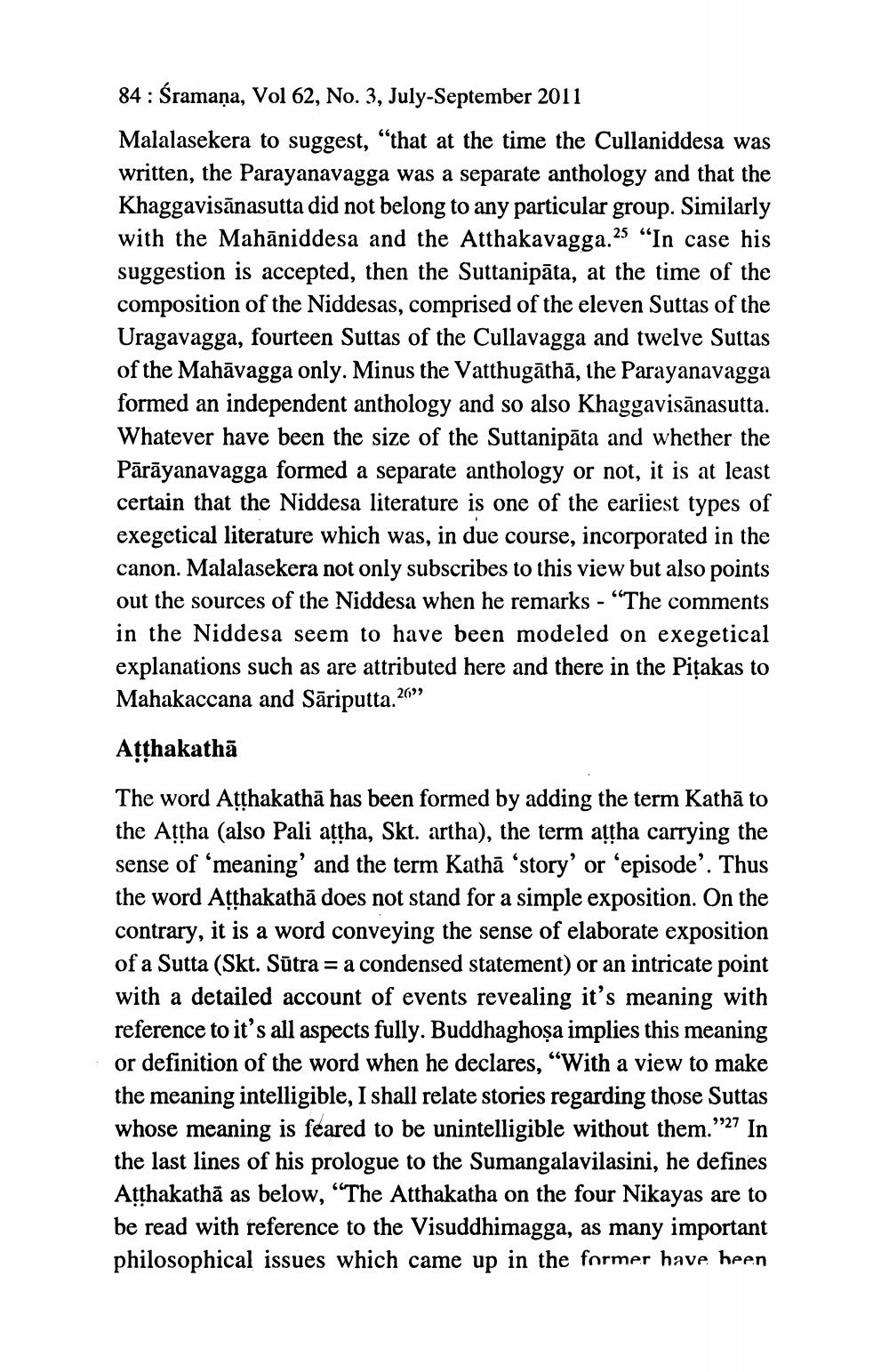________________
84: Śramaņa, Vol 62, No. 3, July-September 2011 Malalasekera to suggest, "that at the time the Cullaniddesa was written, the Parayanavagga was a separate anthology and that the Khaggavisānasutta did not belong to any particular group. Similarly with the Mahāniddesa and the Atthakavagga.25 “In case his suggestion is accepted, then the Suttanipāta, at the time of the composition of the Niddesas, comprised of the eleven Suttas of the Uragavagga, fourteen Suttas of the Cullavagga and twelve Suttas of the Mahāvagga only. Minus the Vatthugāthā, the Parayanavagga formed an independent anthology and so also Khaggavisānasutta. Whatever have been the size of the Suttanipāta and whether the Pārāyanavagga formed a separate anthology or not, it is at least certain that the Niddesa literature is one of the earliest types of exegetical literature which was, in due course, incorporated in the canon. Malalasekera not only subscribes to this view but also points out the sources of the Niddesa when he remarks - "The comments in the Niddesa seem to have been modeled on exegetical explanations such as are attributed here and there in the Pițakas to Mahakaccana and Sāriputta.26”
Atthakathā
The word Atthakathā has been formed by adding the term Kathā to the Attha (also Pali attha, Skt. artha), the term aļịha carrying the sense of 'meaning' and the term Kathā 'story' or 'episode'. Thus the word Atthakathā does not stand for a simple exposition. On the contrary, it is a word conveying the sense of elaborate exposition of a Sutta (Skt. Sūtra = a condensed statement) or an intricate point with a detailed account of events revealing it's meaning with reference to it's all aspects fully. Buddhaghoṣa implies this meaning or definition of the word when he declares, “With a view to make the meaning intelligible, I shall relate stories regarding those Suttas whose meaning is feared to be unintelligible without them.""7 In the last lines of his prologue to the Sumangalavilasini, he defines Atthakathā as below, "The Atthakatha on the four Nikayas are to be read with reference to the Visuddhimagga, as many important philosophical issues which came up in the former have heen




